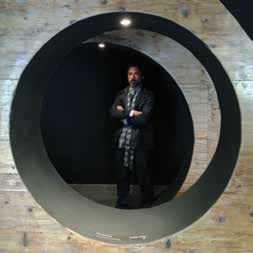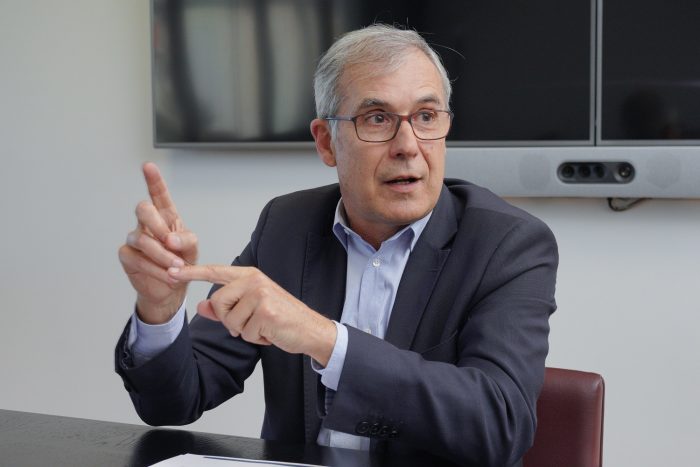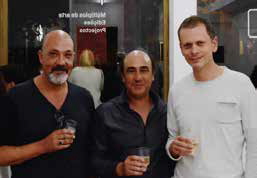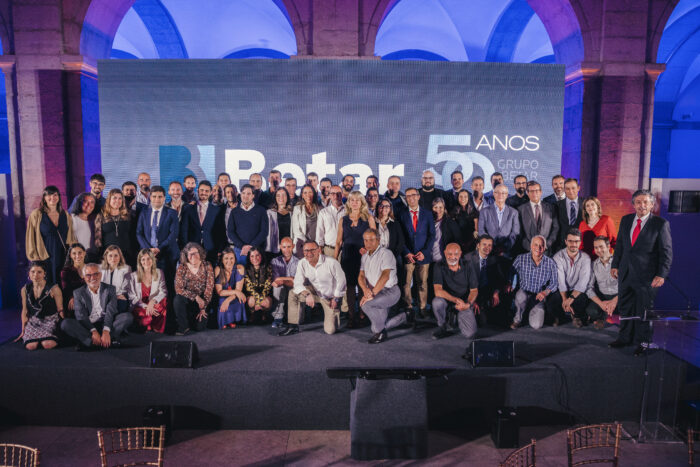A conversation with Arch. Jorge Sousa Santos

A conversation with Arch. Jorge Sousa Santos
'I think I am an architect due to the influence of Lego (…) As for architecture, there is an idea that I have been pursuing which is that a building is an object that cannot be decomposed.'
SousaSantos Arquitectos has now an exhibition, at Shed76, entitled Getting Through, which proposes a reflection on everyday objects. Tell us a little about this project.
The exhibition is part of the Lisbon Architecture Triennale and was made under the theme of this year, which is “Close Closer”. The space was designed on this basis of proximity, the corridors are narrow, the objects are very close to people and it is intended that there is an interaction between the body and the object. We started by thinking about the relationship we have with some objects, which function as interfaces of architecture, that is, which are part of architecture but which are autonomous, like a chair or a washbasin. Thus, we invited 20 personalities from the Portuguese cultural context and asked them to choose an object that was close to them. Then we invited 15 architects, artists and designers, to choose one of the objects and do anything from it. At first stage, we present the chosen objects, and then those that will result from the ideas that these first aroused. There are objects like a garden bench of the house of architect Ricardo Bak Gordon; a teddy bear by congresswoman Joana Amaral Dias, who is serving as a catalyst for a piece of mine, which will serve to leave objects we like, a kind of collector of memories; a chair by choreographer Olga Roriz, which is being worked on by Beyond Architects; some pencils by stylist José António Tenente, which designer Joana Astolfi will use to develop her proposal; a stove by Telmo Faria, owner of Hotel Rio do Prado, which sponsors this project; a speedometer of a Porsche, by photographer Fernando Guerra; among others.
Did you decide just by yourself that you wanted to be an architect? How has your vision of architecture evolved over the years?
Seen from this distance, I think I am an architect due to the influence of Lego. I must be one of the first generations that had access to these toys and that was decisive, in addition to being very fond of drawing. At the age of 15, I had already pointed in this direction, also due to the context in which I lived at the time; it was an optimistic time, when some architects were beginning to be recognized. As for architecture, there is an idea that I have been pursuing recently, that it is that a building is an object, determined by the notion of unity, which cannot be broken down into a series of parts. I worked for a long time with the architect Manuel Tainha, who was a huge reference, but when I started working alone I realized that I had to do things differently. I have a tremendous admiration for the work process of architect Tainha, and for the works he has, but I do not work according to his principles, because I felt that it did not make sense to follow the same process. My activity has always been very centered on the unity of the object.
How do you see the current context of architecture in Portugal?
The architectural context is undergoing substantial changes at several levels. Interesting things are happening in the dissemination of architecture, for example. Nowadays, architecture is mediatized from the internet and this allows small studios, like mine, at a certain moment, for example when they launch a work, to have a projection identical to that of a large studio. The work of the “star architects” is gradually being disseminated. In the Portuguese context, there was always a closed circle of architects that everyone knew, but with the increase in the number of faculties, that changed. These transformations in the social fabric of architects have very expressive effects and create a certain tension. On the one hand this is good because there are more and more architects producing interesting things, on the other hand it makes more visible the situation that there is little work.
You have a Masters in Contemporary Architectural Culture. What did you defend in the thesis and how did it effectively contribute to your work?
Architect Tainha was my teacher in the 5th year and the final work was a Museum in Rua do Alecrim, where today there is a Siza’s building. I liked this work so much that I did my master’s thesis about museums, about the place of art. I was interested in the relationship between art and architecture: how is art exposed? how can architecture take advantage of art and vice versa?
My thesis was about the space of a museum in contemporary times and the way an object is exposed, and that had an effective impact on my work. I have a project for a museum that can now move forward, but the importance of exhibiting is very present in works that I have done, namely in three eyeglass stores, where the process of displaying objects is always different, the process of exhibiting is the foundation of these projects.
Of the projects you did with Betar, is there one that you feel went particularly well?
I really like the Rafael Bordalo Pinheiro High School, which was made with engineer José Pedro Venâncio. I especially like the library, which is defined by having a skylight in the capital of the metal pillars that punctuate the room, a device that alludes to Constantin Brancusi’s notion of an endless column. Basically, it reflects how we can take advantage of the architectural component and make it more meaningful. It was an architecture / engineering solution that worked very well.
Was there any reaction to your work that surprised you, positive or negative?
I think people outside of architecture react very positively to what I do. As for architects, I think that there is still a certain tendency to work in a certain way and belong to a group, and whoever does not belong to a particular school, does not belong to that group. I feel like an outsider, someone who works in a more or less isolated, independent way. But obviously it is fantastic to know that my work is recognized by some of my peers.
This interview is an integral part of Revista Artes & Letras # 49, January 2014
Partially automatic translation from portuguese: some expressions may differ from their actual meaning.
News & Interviews
A conversation with Eng. Jorge Pereira
'VR1 is a road (...) built on a rugged terrain. Around 70% of our infrastructure is, roughly speaking, bridged or tunneled and this sets us apart from most concessions' Read more
A conversation with Eng. João Loureiro
'There is a unique space in Lisbon that aims to disseminate contemporary art and make it reach more people.' Read more
Birthday Dinner
To celebrate the 50th anniversary of BETAR we gathered several customers, partners, employees and friends at a commemorative dinner. Read more




